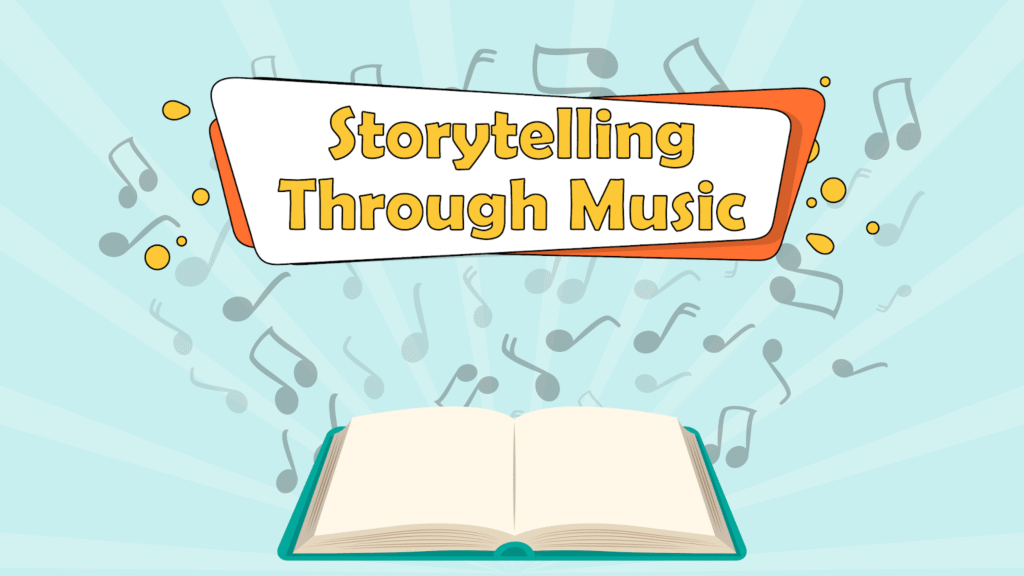Music has always been more than mere sound; it is a conduit for human experience, a vessel carrying emotions, memories, and cultural heritage. At the heart of this artistic form lies the profound ability to tell stories—an ability that transforms melodies and harmonies into narratives that resonate deeply with listeners. The concept of storytelling through sound elevates music beyond entertainment, making it a medium that conveys meaning, evokes emotion, and preserves history across generations.

The beauty of music as a storytelling tool is its universality. A single melody can traverse language barriers, conveying joy, sorrow, triumph, or introspection without uttering a single word. Through careful composition, artists craft narrative-driven music that guides listeners on a journey, unfolding tales in waves of crescendos, silences, and intricate rhythms. These musical narratives allow audiences to engage with the work on a deeply personal level, often interpreting stories in ways that mirror their own experiences.
Crafting Stories Through Musical Elements
Every element of music contributes to storytelling. Tempo, rhythm, melody, and harmony are like chapters in a book, each shaping the narrative in distinct ways. A slow, haunting piano piece might convey longing or loss, while an upbeat, syncopated rhythm could evoke celebration or mischief. Instrumentation adds texture, with strings often signaling intimacy, brass conveying grandeur, and electronic effects introducing elements of modernity or tension. When combined thoughtfully, these components create emotion in art, allowing the listener to feel the story as vividly as if it were spoken aloud.
Lyrics, when incorporated, further enhance the narrative. Words give structure to the musical tale, anchoring abstract emotions in specific imagery and dialogue. Yet, even without lyrics, instrumental compositions can tell compelling stories, demonstrating the versatility of music as a narrative medium. From symphonic suites to experimental soundscapes, composers have long mastered the art of communicating intricate stories entirely through auditory channels.
Stories in Rhythm and Melody
Rhythm and melody are central to conveying narrative in music. Repetitive motifs can represent themes or characters, while variations on these motifs indicate development, conflict, or resolution. Dynamic shifts guide emotional tension, providing a sense of progression akin to the arcs found in literature. Percussive patterns often mimic natural or human rhythms—heartbeats, footsteps, or the cadence of spoken word—immersing the listener in the unfolding tale. These techniques exemplify the concept of stories in rhythm, where narrative unfolds not through words but through the very structure of the music itself.
Moreover, cross-cultural influences enrich storytelling in music. Traditional rhythms, scales, and tonal systems carry histories and legends embedded within their structures. For instance, West African drumming traditions transmit communal stories, while Indian ragas are designed to evoke particular times of day, emotions, and spiritual states. In this way, music becomes a vessel for both personal and collective narratives, bridging past and present.
Emotional Resonance and Connection
One of the most powerful aspects of storytelling in music is its ability to foster empathy and shared experience. Music invites listeners to inhabit the emotional landscape of the creator, offering insight into perspectives and lives different from their own. A melancholic violin solo or an impassioned vocal delivery can elicit tears, while a jubilant brass section can inspire elation. The universality of emotion in art ensures that these stories transcend individual experience, connecting communities through shared sentiment and understanding.
Storytelling in music also encourages introspection. Listeners often project their own memories and interpretations onto a piece, creating a dialogue between artist and audience. This interaction transforms music into a living story, evolving with each new listener who engages with it. It demonstrates the profound capacity of musical storytelling to not only convey existing narratives but also inspire personal reflection and discovery.
Modern Applications of Musical Storytelling
In contemporary music, storytelling continues to evolve. Concept albums, multimedia performances, and interactive digital experiences integrate visual art, technology, and sound to construct immersive narratives. Artists now experiment with unconventional structures, blending genres and media to create multilayered stories. Video games and virtual reality experiences also leverage narrative-driven music, using soundtracks to enhance plotlines, build tension, and deepen immersion, further exemplifying the adaptability of musical storytelling in the modern era.
Music education increasingly emphasizes narrative comprehension, encouraging students to understand not just notes and rhythms but also the stories they convey. This approach nurtures both analytical and emotional skills, highlighting music’s dual role as both art and communication. By teaching how to interpret and create stories through sound, educators ensure that the tradition of narrative-driven music continues to flourish.






